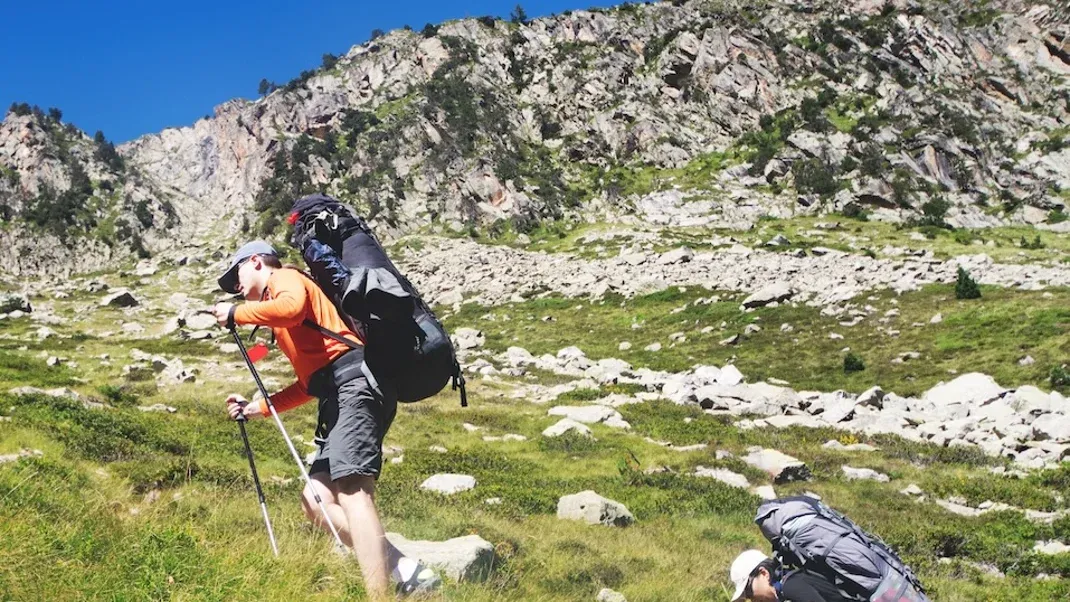Numb Fingers While Winter Hiking? You Might Have This Condition.
Numb fingers while winter hiking could be a sign of a condition called Raynaud's phenomenon, also known as Raynaud's disease. This condition causes the blood vessels in the fingers and toes to constrict, leading to reduced blood flow and numbness in the affected areas. It is more common in cold temperatures, making it a concern for winter hikers. Other symptoms may include color changes in the skin, such as turning white or blue, and a tingling or burning sensation. It's important for hikers experiencing these symptoms to seek medical attention and take precautions, such as wearing insulated gloves and staying warm, to prevent further complications.

Numb Fingers While Winter Hiking? You Might Have This Condition.
Winter hiking can be a beautiful and serene experience, with snow-covered trails and crisp, clean air. However, it can also present some challenges, particularly when it comes to staying warm. One common issue that hikers may experience during winter hikes is numbness in the fingers. While this may seem like a minor inconvenience, it can actually be a symptom of a more serious condition known as Raynaud's phenomenon.
Raynaud's phenomenon is a condition in which the small blood vessels in the extremities, such as the fingers and toes, constrict in response to cold or stress. This constriction limits the flow of blood to the affected areas, leading to numbness, tingling, and a change in color. When the blood vessels eventually relax and blood flow returns, the affected areas may turn red, white, or blue. This can be a painful and uncomfortable experience, particularly when hiking in cold weather.
There are two types of Raynaud's phenomenon: primary and secondary. Primary Raynaud's, also known as Raynaud's disease, is the most common form and typically occurs on its own, without an underlying medical condition. Secondary Raynaud's, on the other hand, is usually associated with other health issues, such as autoimmune diseases, connective tissue disorders, or injuries to the hands or feet.
So, how can you tell if your numb fingers while winter hiking are a result of Raynaud's phenomenon? There are a few key signs to look for. First, pay attention to the timing and triggers of the symptoms. Do they occur only in response to cold temperatures, or do they also happen in stressful situations? Do you notice any changes in the color of your fingers or toes when the symptoms occur? If you experience these symptoms regularly, it's important to consult a healthcare professional for a proper diagnosis.
In addition to the discomfort and inconvenience it causes, Raynaud's phenomenon can also have long-term effects on the affected areas. Prolonged constriction of the blood vessels can lead to tissue damage and, in severe cases, ulceration or gangrene. This makes it crucial to take steps to manage the condition and minimize the risk of complications, particularly when engaging in activities like winter hiking.
There are several strategies that hikers can use to prevent and manage Raynaud's phenomenon while hiking in cold weather. First and foremost, staying warm is key. Wearing layers of clothing, including gloves and hand warmers, can help keep the body's core temperature up and reduce the risk of triggering symptoms. It's also important to stay dry, as wet clothing can make it harder to retain body heat.
In addition to dressing appropriately, hikers with Raynaud's phenomenon should take steps to protect their hands and feet from the cold. This may include using insulated mittens or gloves, wearing waterproof footwear, and using hand warmers or chemical heat packs to keep the extremities warm. It's also a good idea to take frequent breaks to warm up and stretch, particularly if the hike involves long periods of exposure to cold temperatures.
Beyond these practical measures, there are also lifestyle changes that can help manage Raynaud's phenomenon. Quitting smoking, reducing stress, and avoiding caffeine and certain medications can all help reduce the frequency and severity of symptoms. In some cases, healthcare professionals may also recommend medications to help relax the blood vessels and improve circulation.
If you suspect that you may have Raynaud's phenomenon, it's important to seek medical advice. A healthcare professional can provide a proper diagnosis and help you develop a plan for managing the condition. They can also help rule out any underlying health issues that may be contributing to the symptoms. By taking proactive steps to manage Raynaud's phenomenon, hikers can continue to enjoy the beauty of winter hiking while minimizing the impact of this potentially debilitating condition.






